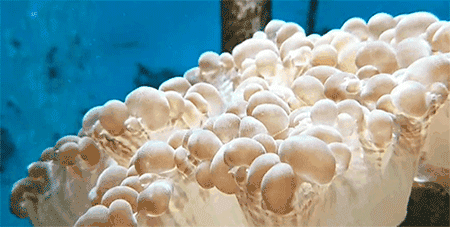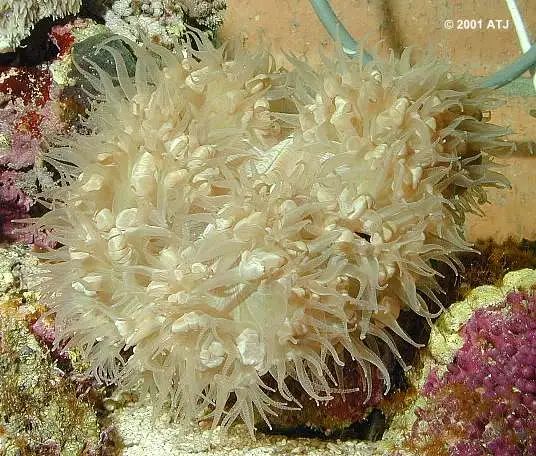Today is World Oceans Day and National Oceans Awareness Day . This year’s theme is ” Protecting the Marine Ecosystem, Harmonious Coexistence between Man and Nature “. In the mysterious, magnificent and dynamic blue realm of China’s coastal waters, there are all kinds of marine creatures, about 20,000 species, accounting for about 10% of the world’s marine species . Nutshell, the Publicity and Education Center of the Ministry of Natural Resources, and the People’s Daily jointly created and released a marine version of cancan dance – “You You You You You You” ! The song was written and sung by the ” Nutshell Science Choir “. Through the joyful and magical singing, everyone dived into the bottom of the sea and felt the wonder and beauty of the ocean.
An AI chime in
After listening to this magical tune, are you also eager to try it? Welcome to challenge and contribute ! Go to the homepage of Nuohu Video , find the karaoke version , and then you can sing along.
Send your cover works (both video and audio) to [email protected] before 23:59 on June 15th, and your works may appear in the subsequent version of the netizens’ chorus. Kids can try it too! All the outstanding singers who are adopted will receive the popular science book “This Can’t Be True!” 》
Diverse and fascinating creatures have always been the driving force for people to explore the ocean. Among them, coral reefs formed by animals such as reef- building corals shelter 25% of the creatures in the ocean.
The so-called “reef building” means to form a reef . The branch-shaped staghorn coral, the small spherical “Oriental Pseudohorn coral”, the ganoderma-shaped “shizhi coral”, the honeycomb-shaped “honeycomb coral”… Reef-building corals of various shapes together build a “tropical rainforest in the sea” – Coral reefs. The world’s coral reefs cover less than 0.1% of the ocean, but more than 25% of marine life live in them.

‘Rainforest in the Sea’ coral reef, renowned for its diversity|Ritiks/wikipedi
The world of coral also has soft cuteness
Reef-building corals often have a common feature of forming large calcareous skeletons within their bodies. It is these calcareous skeletons that provide complex habitats for other creatures. It is precisely because of these calcareous skeletons in the body that reef-building corals have a certain hardness to the touch and were once called hard corals .
Do you think it’s time to watch some “tough guys” today? Don’t worry, let’s take a look at this animation first:

This is not enoki mushroom, it is also reef-building coral! Taken at the National Maritime Museum in Nha Trang, Vietnam, 10 times faster. | Chino youko
Surprised or not, surprised or not? What we want to introduce today is a soft reef-building coral that subverts people’s perception – Plerogyra sinuosa . It looks like a bunch of grape-sized bubbles that can be broken by blowing bombs. The Chinese name is ” bubble coral “, and the English name “bubble coral” is also vivid. It is precisely because of this interesting image that it has also been moved from the sea into their own aquariums by aquarium enthusiasts at home and abroad, calling it “bubble coral”.

A large colony of vesicular corals|Bryan Harry/Wikimedia Commons
Two faces day and night
The vesicular corals are distributed in the Pacific-Indian Ocean and have also been found in the South China Sea. It has a special image of “underwater grape bunches”. If you encounter it during daytime diving, I believe it will be unforgettable at first sight. Night diving, but not necessarily. Because, sac corals are not the same during the day and night .

This is what a vesicular coral looks like during the day|Paul Kli/Wikimedia Commons
During the day, vesicular corals blow bubbles, which are lovely. At night, they not only put away their bulging sacs, but also stretch out their fleshy, stinging tentacles, reappearing as predators , preying on plankton in the seawater.

A deflated vesicular coral | Nhobgood Nick Hobgood/Wikimedia Commons

The tentacles of a saccular coral. |atj.net.au
night owl blowing bubbles
If you want to know why the sac coral has two faces of a little angel during the day and a little devil at night, you have to go back to the reef-building coral group to which it belongs. In addition to the formation of large calcareous skeletons, most reef-building corals have one thing in common— they have two metabolisms at the same time: autotrophic, which photosynthesizes in symbiosis with zooxanthellae, and heterotrophic, which preys on plankton.
The researchers found through experiments that more zooxanthellae were present in the bulging cells of vesicular corals than in tentacles. During the day, the vesicular coral blows bubbles , allowing the zooxanthellae to fully receive sunlight, and the photosynthetic efficiency reaches the maximum; the photosynthesis of the zooxanthellae also shares a large amount of energy with the symbiotic coral for its normal life and the production of limestone. skeleton. For tentacles covered with cnidarians , night is a more relaxed and pleasant time; rather than crowding between bulging sacs during the day, the tentacles can eat at night when the sun is lost and the corals put away the sacs. Swing freely, the predation efficiency is greatly increased.

It’s not easy to get tentacles out of this pile of orbs during the day. |RevolverOcelot/Wikimedia Commons
Visually speaking, vesicular coral is like a little night owl who basks in the sun during the day, blows bubbles and sleeps , and wakes up when night falls .
Bubble coral and its friends
Different from the image of human night walkers who are often hidden in the night and sparsely socialized, the sac corals in the vast sea usually have small friends who can play with them – symbiotic coral shrimp or coral crabs .

Japanese hero crab ( Achaeus japonicus ) in symbiosis with vesicular coral | Bernard DUPONT /Wikimedia Commons
Between the bulging small sacs, the small coral shrimp and coral crabs can enter and exit freely, and their survival in the crevices keeps them away from the danger of being swallowed by predators. At the same time, the protein-rich mucus secreted on the surface of the vesicular coral, the algae on it, and even the “night supper” residue left by the vesicular coral are also the food of these symbiotic friends.

A Coral Shrimp ( Thor amboinensis ): “Watching in the dark, what’s for dinner tonight?” | berniedup/flickr
Coral shrimps and coral crabs enjoy the protection and delicacy provided by corals, while vesicular corals also enjoy the cleaning services of their friends-coral shrimps and coral crabs eat other algae, so as not to block the sunlight needed by the symbiotic algae. And coral crabs can even provide some sort of security service — driving away predators of vesicular corals.

Among them are unwelcome guests, such as acoelomates that inhabit saccular corals, which look beautiful and are harmful to corals. |Bernard DUPONT/Wikimedia Commons
Today’s story is just a microcosm of the colorful coral reef ecosystem whose existence is vital to marine ecology . At present, the country is gradually increasing the legal protection of coral reefs , and more researchers and volunteers are devoted to coral research, protection, popularization and publicity. There are also biologists who help corals carry out assisted evolution , find varieties with strong adaptability in the wild, select them in the laboratory, and then put them back into the wild for strict cultivation.
As people explore deeper and deeper, the magic and beauty of the ocean continue to emerge, and people’s ideas for ocean protection are gradually becoming clearer.
Author: Chino Youko
Editor: Calendar Girl, Er Kili, Sister Black Jio
Cover image credit: RevolverOcelot/Wikimedia Commons
This article is from Nutshell and may not be reproduced without authorization.
If necessary, please contact [email protected]

This article is reproduced from: http://www.guokr.com/article/461608/
This site is for inclusion only, and the copyright belongs to the original author.